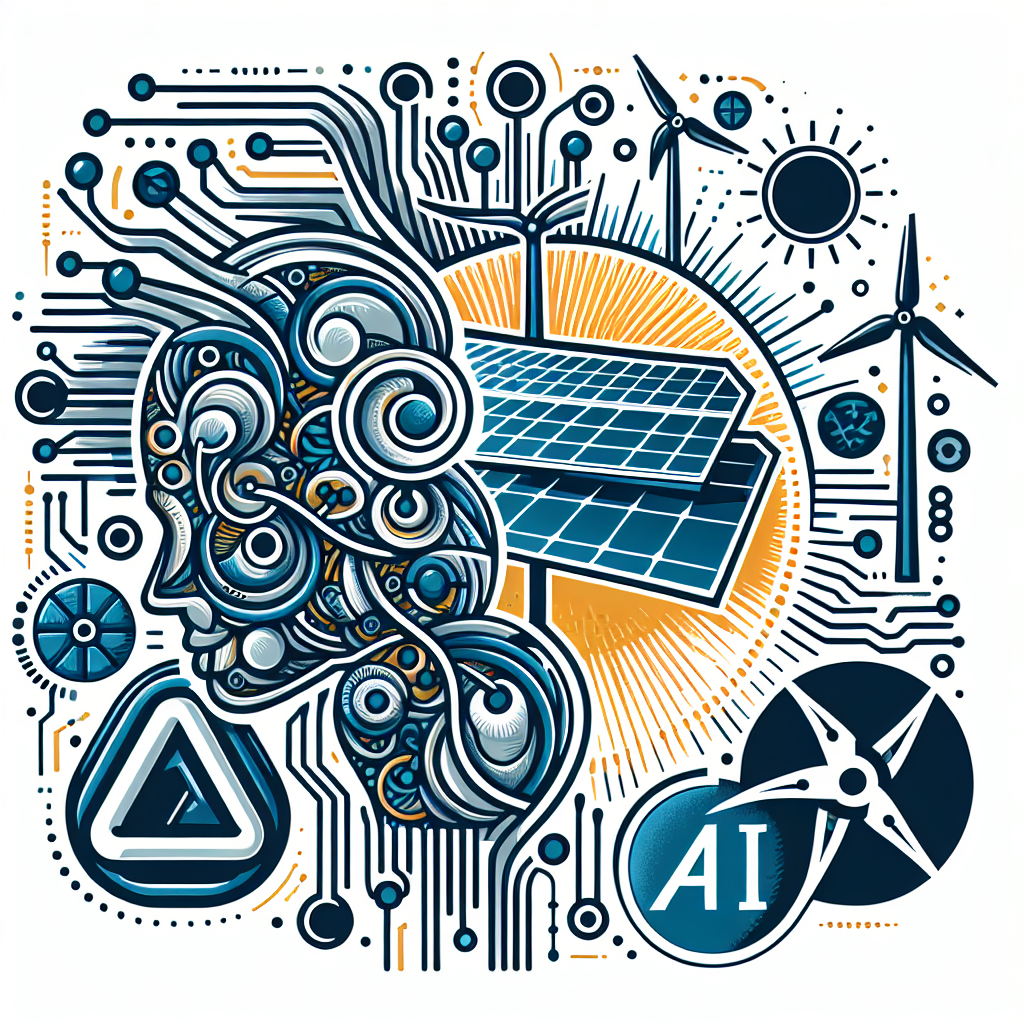As renewable energy sources such as solar and wind power continue to grow in popularity, the need for AI solutions to enhance energy resilience has become increasingly important. AI technologies can help optimize the management of energy resources, predict demand, and improve the efficiency of renewable energy systems. In this article, we will explore how AI can be used to enhance energy resilience in renewables and address frequently asked questions about this topic.
AI Solutions for Enhancing Energy Resilience in Renewables
1. Predictive Analytics: One of the key ways AI can enhance energy resilience in renewables is through predictive analytics. By analyzing historical data, AI algorithms can predict energy demand patterns, weather conditions, and other factors that may impact renewable energy production. This information can help energy operators optimize their energy production and distribution systems to ensure a reliable and resilient energy supply.
2. Energy Management Systems: AI-powered energy management systems can help optimize the operation of renewable energy assets such as solar panels and wind turbines. These systems can automatically adjust energy production levels based on real-time data, weather forecasts, and energy demand patterns. By optimizing energy production and distribution, AI can help reduce energy waste and improve overall energy resilience.
3. Grid Optimization: AI algorithms can also be used to optimize the energy grid and improve its resilience to fluctuations in renewable energy production. By analyzing data from sensors and smart meters, AI can help energy operators identify potential issues in the grid and take proactive measures to prevent disruptions. For example, AI can help identify areas of the grid that are at risk of overload and automatically adjust energy flow to prevent blackouts.
4. Asset Maintenance: AI can also be used to enhance the maintenance of renewable energy assets such as solar panels and wind turbines. By analyzing data from sensors and IoT devices, AI algorithms can predict when maintenance is needed and schedule repairs before a breakdown occurs. This proactive approach to maintenance can help prevent costly downtime and improve the overall resilience of renewable energy systems.
5. Demand Response: AI-powered demand response systems can help balance energy supply and demand in real-time. These systems can automatically adjust energy consumption based on grid conditions, energy prices, and other factors. By optimizing energy use in this way, AI can help reduce the risk of blackouts and improve the overall resilience of the energy grid.
Frequently Asked Questions
Q: How can AI help improve the efficiency of renewable energy systems?
A: AI can help improve the efficiency of renewable energy systems by optimizing energy production and distribution, predicting energy demand patterns, and enhancing asset maintenance. By using AI algorithms to analyze data from sensors and IoT devices, energy operators can identify ways to improve the performance of renewable energy assets and reduce energy waste.
Q: Can AI help prevent blackouts in the energy grid?
A: Yes, AI-powered grid optimization systems can help prevent blackouts by analyzing data from sensors and smart meters to identify potential issues in the grid. By taking proactive measures to address these issues, such as adjusting energy flow or redistributing energy resources, AI can help improve the overall resilience of the energy grid and reduce the risk of blackouts.
Q: How can AI be used to enhance the maintenance of renewable energy assets?
A: AI algorithms can be used to analyze data from sensors and IoT devices to predict when maintenance is needed for renewable energy assets such as solar panels and wind turbines. By scheduling maintenance before a breakdown occurs, AI can help prevent costly downtime and improve the overall resilience of renewable energy systems.
Q: What are the key benefits of using AI solutions for enhancing energy resilience in renewables?
A: Some of the key benefits of using AI solutions for enhancing energy resilience in renewables include improved energy efficiency, reduced energy waste, enhanced asset maintenance, and better grid optimization. By leveraging AI technologies, energy operators can optimize their energy production and distribution systems to ensure a reliable and resilient energy supply.
In conclusion, AI solutions have the potential to enhance energy resilience in renewables by optimizing energy production and distribution, predicting energy demand patterns, improving asset maintenance, and enhancing grid optimization. By leveraging AI technologies, energy operators can improve the efficiency and reliability of renewable energy systems, ultimately helping to build a more sustainable energy future.

